
Mount Kembla is a suburb and a mountain in the Illawarra region of New South Wales, Australia.
A mining accident is an accident that occurs during the process of mining minerals or metals. Thousands of miners die from mining accidents each year, especially from underground coal mining, although accidents also occur in hard rock mining. Coal mining is considered much more hazardous than hard rock mining due to flat-lying rock strata, generally incompetent rock, the presence of methane gas, and coal dust. Most of the deaths these days occur in developing countries, and rural parts of developed countries where safety measures are not practiced as fully. A mining disaster is an incident where there are five or more fatalities.

Briceville is an unincorporated community in Anderson County, Tennessee. It is included in the Knoxville, Tennessee Metropolitan Statistical Area. The community is named for railroad tycoon and one-term Democratic U.S. Senator Calvin S. Brice of Ohio, who was instrumental in bringing railroad service to the town.
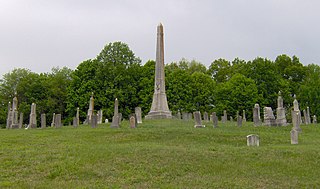
The Fraterville Mine disaster was a coal mine explosion that occurred on May 19, 1902 near the community of Fraterville in the U.S. state of Tennessee. Official records state that 216 miners died as a result of the explosion, from either its initial blast or from the after-effects, making it the worst mining disaster in the United States' history, and remains the worst disaster in the history of Tennessee. However, locals claim that the true number of deaths is greater than this because many miners were unregistered and multiple bodies were not identified. The cause of the explosion was likely ignition of methane gas which had built up after leaking from an adjacent unventilated mine.
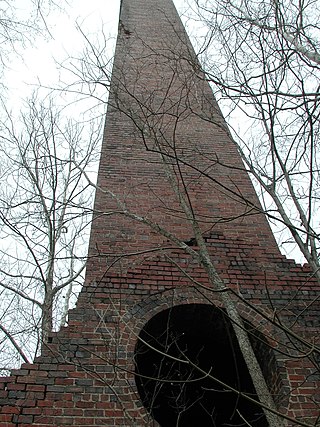
The Millfield Mine disaster occurred November 5, 1930, at the Sunday Creek Coal Company Poston Mine Number 6 in Dover Township, Athens County, Ohio. It was the state's worst mine disaster, killing 82 men. Sigmund Kozma was the last remaining survivor of the disaster, passing away on January 3, 2009.

The Monongah mining disaster was a coal mine explosion on December 6, 1907, at Fairmont Coal Company's Nos. 6 and 8 mines in Monongah, West Virginia, which killed 362 miners. It has been described as "the worst mining disaster in American history" and was one of the contributing events that led to the creation of the United States Bureau of Mines.
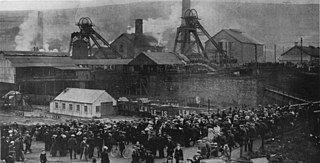
The Senghenydd colliery disaster, also known as the Senghenydd explosion, occurred at the Universal Colliery in Senghenydd, near Caerphilly, Glamorgan, Wales, on 14 October 1913. The explosion, which killed 439 miners and a rescuer, is the worst mining accident in the United Kingdom. Universal Colliery, on the South Wales Coalfield, extracted steam coal, which was much in demand. Some of the region's coal seams contained high quantities of firedamp, a highly explosive gas consisting of methane and hydrogen.
Blackdamp, sometimes found in enclosed environments such as mines, sewers, wells, tunnels and ships' holds, is an asphyxiant, reducing the available oxygen content of air to a level incapable of sustaining human or animal life. It is not a single gas but a mixture of unbreathable gases left after oxygen is removed from the air; it typically consists of nitrogen, carbon dioxide and water vapour. The term is etymologically and practically related to terms for other underground mine gases such as fire damp, white damp, stink damp, and afterdamp.

The Brunner Mine disaster happened at 9:30 am on Thursday 26 March 1896, when an explosion deep in the Brunner Mine, in the West Coast region of New Zealand, killed all 65 miners below ground. The Brunner Mine disaster is the deadliest mining disaster in New Zealand's history.

The Coal Creek War was an early 1890s armed labor uprising in the southeastern United States that took place primarily in Anderson County, Tennessee. This labor conflict ignited during 1891 when coal mine owners in the Coal Creek watershed began to remove and replace their company-employed, private coal miners then on the payroll with convict laborers leased out by the Tennessee state prison system.

The Briceville Community Church is a nondenominational church located in Briceville, Tennessee, United States. Built in 1887, the church served as a center of social life and community affairs for the Coal Creek Valley during the valley's coal mining boom period in the late-19th and early-20th centuries. In 2003, the church was added to the National Register of Historic Places for its historical role and as an example of rural Gothic Revival architecture.
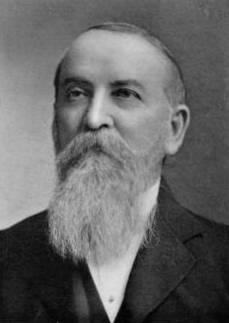
Eldad Cicero Camp Jr. was an American coal tycoon, attorney and philanthropist, active primarily in Knoxville, Tennessee, and the vicinity. He was president of the Coal Creek Coal Company, president of the Virginia-Tennessee Coal Company, a director of Knoxville's Third National Bank, and at his height, was one of the wealthiest men in East Tennessee. His prominent North Knoxville mansion, Greystone, is listed on the National Register of Historic Places.
The Scofield Mine disaster was a mining explosion that occurred at the Winter Quarters coal mine on May 1, 1900. The mine was located at 39°42′57″N111°11′17″W near the town of Scofield, Utah. In terms of life lost, it was the worst mining accident at that point in American history. The explosion is also a key element in the plot of the Carla Kelly novel My Loving Vigil Keeping.
Coal Creek is a tributary of the Clinch River in Tennessee. The stream is approximately 10.3 miles (16.6 km) long.

The Mather Mine disaster refers to the events surrounding an explosion that occurred in the Mather Mine on May 19, 1928, at 4:07 PM in Mather, Pennsylvania. A report released by the United States Bureau of Mines states that a total of 195 men were killed in the catastrophe, of which two died in hospitals after being discovered by rescue crews and volunteers. The Mather Mine disaster ranks as the seventh worst mining disaster in U.S. history and the second worst in Pennsylvania history.

Mine safety is a broad term referring to the practice of controlling and managing a wide range of hazards associated with the life cycle of mining-related activities. Mine safety practice involves the implementation of recognised hazard controls and/or reduction of risks associated with mining activities to legally, socially and morally acceptable levels. While the fundamental principle of mine safety is to remove health and safety risks to mine workers, mining safety practice may also focus on the reduction of risks to plant (machinery) together with the structure and orebody of the mine.
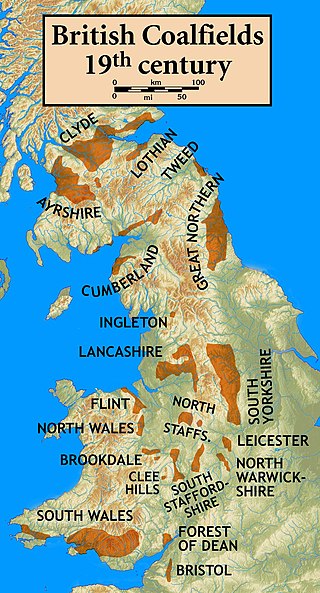
The Lundhill Colliery explosion was a coal mining accident which took place on 19 February 1857 in Wombwell, Yorkshire, UK in which 189 men and boys aged between 10 and 59 died. It is one of the biggest industrial disasters in the country's history and it was caused by a firedamp explosion. It was the first disaster to appear on the front page of the Illustrated London News.
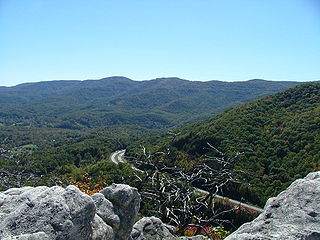
Cross Mountain is a mountain in the Cumberland Mountains in the U.S. state of Tennessee. At an elevation of 3,534 feet (1,077 m), it is the highest mountain in Tennessee that is not part of the Blue Ridge Province of the Appalachian Mountains. It contains rich deposits of coal, and in 1911 was the site of one of the deadliest mining disasters in state history.

The Listvyazhnaya mine disaster was a mining accident that occurred on 25 November 2021 in a coal mine in Kemerovo Oblast, Russia. Smoke from a fire in a ventilation shaft caused the suffocation of over 40 miners. A failed attempt to rescue the trapped miners resulted in the deaths of at least five rescuers when the mine exploded. It is the deadliest mine accident in Russia since the 2010 Raspadskaya mine explosion in the same region.

On 10 December 1910, an explosion occurred underground in the West Canadian Collieries No. 1 Mine in the Crowsnest Pass community of Bellevue, Alberta. The explosion pushed all of the air out of the mine and filled it with afterdamp, a deadly gas that is a mixture of Carbon dioxide and Carbon monoxide, killing 30 of the 42 workers present at the time, as well as one rescue worker. The explosion was the first mining disaster in Alberta's history, and led to several changes in coal mining in the Crowsnest Pass. The event was soon overshadowed by the nearby Hillcrest mine disaster four years later, which killed 189 and is Canada's worst mining disaster to date.




















